
 |
|
|
Nursery & Forest
Volume 64 Number 16 Date 08/15/2019 OAK WILT - Symptoms of oak wilt have become evident where the disease occurs in northern Wisconsin, making late summer an opportune time to assess oak stands for damage. This lethal oak disease is spread by pruning or wounding oaks during the spring and summer months, which allows the sap-feeding beetle vectors to introduce the fungus to healthy trees. Once introduced into an oak stand, the fungus can spread underground through grafted roots. Symptoms are more pronounced in red oaks as the leaves turn brown and wilt in a short period of time, while white oaks have additional defenses against the fungus and the effects are less conspicuous. It is strongly recommended that residents and foresters do not prune oak trees from April 1 to July 15 where the disease is established. Oak wilt has been confirmed in 61 of Wisconsin's 72 counties. OAK TWIG PRUNER - Boring by the larval stages of this oak pest in small branches and twigs can result in considerable branch-drop by late summer. If lawns are covered with twigs and branches 20-40 inches long with the leaves still attached, the oak twig pruner is likely the cause. Property owners should look for a small plug of wood or frass at the end of the twig to confirm. Hardwood trees attacked by this beetle may be seriously damaged but are usually not killed. The most effective control is to collect and burn the fallen branches in autumn or winter. JAPANESE BEETLE - Nursery operators and homeowners continue to report damage to linden trees, roses, and numerous other ornamental plants. Adequate soil moisture levels favored grub survival from last season and may be one of the factors contributing to the outbreaks this season. Peak emergence has occurred in most areas and populations should begin to decline by the end of the month. DOGWOOD SAWFLY - Larvae were observed on the foliage of redosier dogwoods in La Crosse County. At this time of year, defoliation has usually progressed to the point that most leaf tissue has been fully consumed and only the midvein remains. Chemical control is effective against early-instar larvae (less than ¾ inch), but that treatment window has closed for this season. Varieties most susceptible to sawfly infestation are the gray and redosier dogwoods. TAR SPOT - This recognizable leaf blight disease is developing on maple trees across Wisconsin. The pale yellow spots apparent 2-3 weeks ago are becoming raised, black, tar-like lesions. Tar spot is an aesthetic disorder best controlled by clearing and disposing of infected leaves in fall to prevent the spores from spreading. In rare cases where treatment is warranted, three fungicide applications are necessary for control: one at bud break, one when leaves are half expanded, and one when leaves are fully expanded. -- Timothy Allen, Tim Boyle, Marcia Wensing, and Konnie Jerabek, DATCP Nursery Inspectors 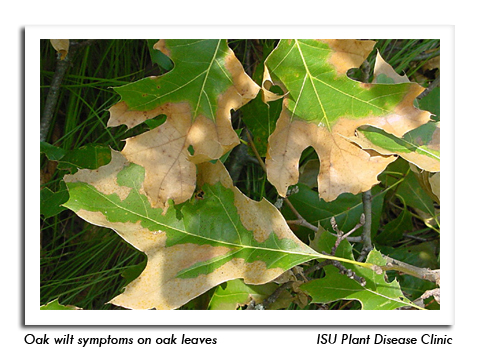
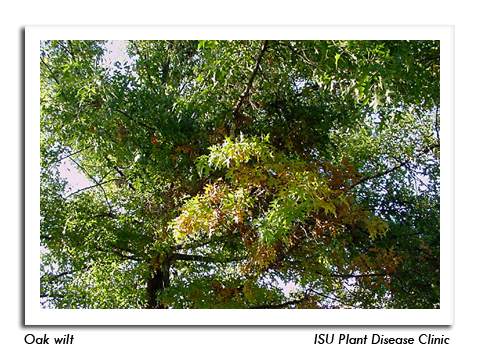
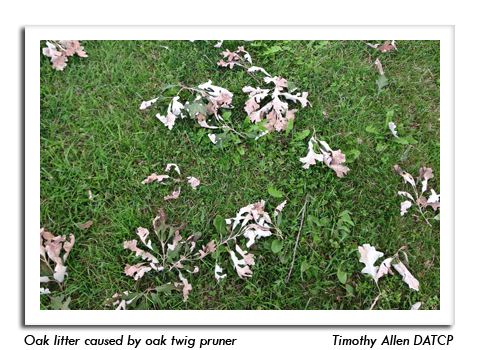
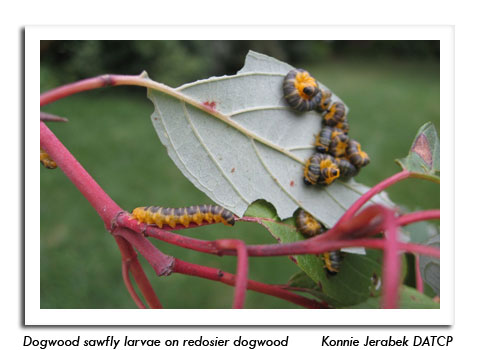
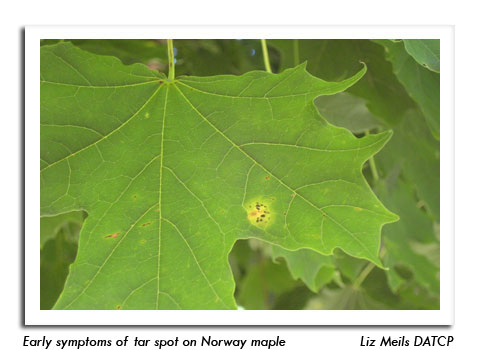
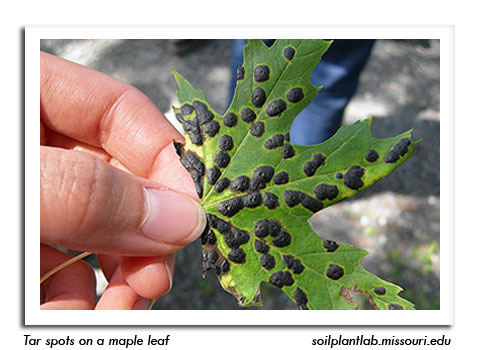
|
|
|